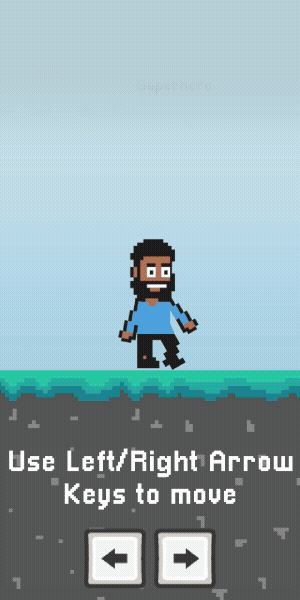Every November, Black Friday arrives as both a commercial high point and an engineering stress test. Traffic spikes, pricing logic changes by the minute and digital customer journeys shift constantly in response to demand. For retailers this weekend, it’s when sales will peak. For engineers, it exposes the limits of their systems, processes and operational maturity.
Yet despite advances in automation and release tooling, many organisations still fall back on the same tactic: the code freeze. It’s a practice rooted in caution. Pause change to reduce the chance of instability. However, in 2025, freezes tell us far more about organisational fragility than they do about best practice.
The hidden fragility beneath the freeze
Our latest research into the state of feature management highlighted how teams are struggling to balance velocity with resilience. More than 80% of software teams experience production incidents at least weekly, and a significant portion admit to shipping risky or unresolved changes when deadlines compress. Even outside of peak season, this level of instability is costly. During Black Friday, it becomes business-critical.
Stopping deployments may feel like a protective measure, but it doesn’t address the root causes. Outages rarely emerge from the last deployed line of code. They arise from complexity, degraded dependencies, misconfigured rules or unpredictable user patterns under load. Freezes limit change, but they don’t eliminate volatility.
Black Friday simply magnifies this reality. It forces engineering leadership to revisit uncomfortable questions like “Do we trust our path to production?” “Do we understand the impact of each change?” “Can we detect and mitigate issues before customers are affected?” And most importantly, “are we engineered for resilience, or simply hoping nothing breaks?”
The pipeline, delivery and AI acceleration collision
While freezes attempt to compensate for fragility, the real challenge lies in how fast development is accelerating. AI-assisted tooling is pushing more changes through pipelines than ever before. In fact, 94% of engineering teams say AI has increased their change velocity, with nearly half reporting a significant jump.
Yet, this acceleration comes with growing unease. More than 90% of teams say they have become more cautious about pushing AI-generated code to production, and 82% believe those changes are likely to introduce production issues. Concerns around unpredictability, lack of proper guardrails, and AI-driven error rates sit at the top of the risk list, creating a tension between unprecedented development speed and the control needed to release safely at scale.
This shift is creating new tensions across the development lifecycle. As AI has increased change volume for 94% of teams, release pipelines are struggling to keep pace, with only a minority reporting they can fully absorb the additional velocity. Under pressure, freezes can feel like a buffer against this mismatch. But their use is less a sign of safety and more a signal that teams lack the fine-grained control needed to manage change confidently.
Underneath this sits a maturity gap. Many teams have adopted foundational practices such as feature toggles or post-deploy configuration changes, but fewer have the more advanced safety mechanisms like progressive rollouts, automated recovery tied to telemetry, real-time audience targeting or deep feature-level observability. Without these, teams equate speed with risk and risk with slowdown.
High-performing teams take a different approach – they design systems capable of absorbing rapid, constant change. Instead of restricting movement, they build confidence into the release process by ensuring issues can be detected, isolated and resolved in seconds. This doesn’t just reduce operational incidents; it reframes change as something controllable rather than something to fear. Black Friday becomes a proving ground, not a threat.
The essential guardrails for peak-ready resilience
If Black Friday proves anything, it’s that resilience isn’t achieved through caution but through structure. The organizations that cope best aren’t relying on luck; they depend on engineered guardrails that make change safe even when pressure peaks. These moments have a way of magnifying weaknesses, but there are a small set of practices that can provide control when it matters:
- Plan for failure, not just success: load test at three times expected peak traffic and have a plan B and C ready
- Failure Mode and Effects Analysis (FMEA): examine all components or steps in the applications to determine how they could fail, the causes of those failures, and the effects on the overall system. This is to mitigate the potential issue and have a plan to remediate quickly should it happen
- Use feature flags as guardrails: toggle features on or off instantly to respond to incidents without redeploying code
- Automate recovery where possible: link feature flags to real-time telemetry so systems react before users notice
- Audit key channels: ensure email deliverability and critical service providers are tested and backed up before the big weekend
- Replace risky code freezes: adopt progressive delivery to keep releasing safely, with full control over who sees what and when
A new understanding of resilience
The organizations navigating peak periods most effectively aren’t the ones slowing down or shutting off deployments. They’re the ones building systems that can absorb rapid iteration, recover quickly from the unexpected and maintain customer experience without relying on hope or caution.
As engineering teams look beyond this year’s Black Friday, the practices that protect you on the busiest weekend of the year are the same ones that strengthen your delivery posture every day. Code freezes may offer a moment of psychological comfort, but long-term reliability comes from structure, observability and controlled, reversible change.
Ultimately, resilience isn’t the absence of change. It’s the ability to manage change confidently, even when demand surges and the margin for error narrows. That requires treating resilience as an operational discipline, not a seasonal exercise.
By Joe Byrne, Global Field CTO, LaunchDarkly

